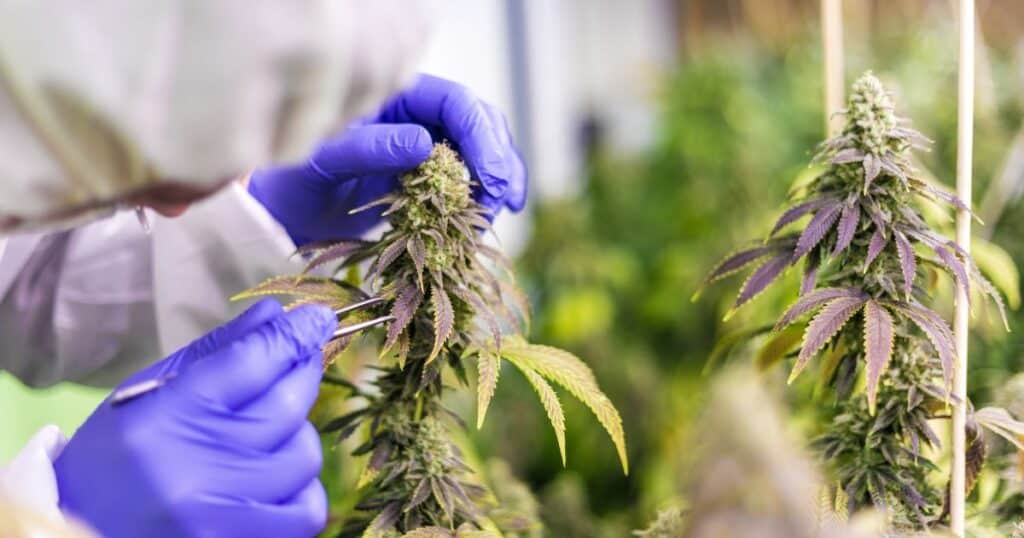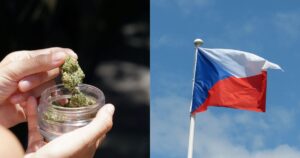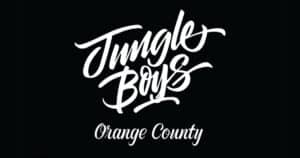This is Part 3 of a three-part series on THC potency inflation; see Part 1 for a discussion on how potency inflation in California is just as bad as ever, and Part 2 for a tongue-in-cheek demonstration of some ways potency inflation is performed by labs.
In Part 1 of this series, we demonstrated how California’s plan to fight THC potency inflation by implementing a standardized method to test THC and other cannabinoids in flower did not have its intended effect: THC numbers for flower and pre-rolls are just as high as ever, just months after the policy was implemented.
In Part 2, we explored some of the ways in which the standardized method, and any method for that matter, can be manipulated to provide less accurate but more favorable data (at least as it pertains to clients wanting higher THC numbers). We tested ourselves in the same way we test other labs, by pulling samples off the shelf that we had previously tested, to show that you can get consistency if you test it right the first time. We also discussed why these results fly in the face of ethical and impartial testing that we as testing labs are supposed to provide.
THC inflation and lab fraud has become rampant in the cannabis industry. Labs around the country that were founded and headed by chemists with principles of scientific integrity are going out of business, or hanging on by a thread, because they are not willing to commit fraud. Producers that are working hard to create products that are being tested accurately are also paying the price because of the artificial standards placed on them by the industry. This is more than just a battle of labs vs. labs; it’s an issue that all honest and good actors are suffering from. The issue of lab fraud is not unique to cannabis and has occurred throughout the history of analytical testing, and in each case the other industries figured out how to put an end to it. Generally, the most egregious cases of fraud rightfully resulted in criminal charges and jail time for the fraudulent lab operators.

Was standardized testing the answer to stopping potency inflation?
So many people have called for and looked to standardized testing as the solution. While the state of California was the first to implement a standardized method, organizations like AOAC (Association of Official Analytical Collaboration) and ASTM (American Society for Testing and Materials) have been working on developing standardized methods for years. As we already mentioned in Part 2, this series is not meant to demonize standardized methods. Any method that is used for testing has to be fit-for-purpose, and properly validated to ensure that it works for the thing you are testing for. If a lab develops its own method, they must perform these trials to demonstrate their validity. Standardized methods have already undergone these trials and should be robust enough to be used by multiple labs to obtain the same results. Also, standardizing certain parts of the process may help eliminate some of the variability caused by differing interpretations of the appropriate way to perform those steps.
But even if a standardized method should make it easier for each lab to obtain similar results to the others for the same sample, that does not guarantee the labs will provide those results. From our experience, the problem is not that the labs don’t know how to do it right, it is that they don’t want to do it right. They want to help out their clients, make them happy with higher numbers, and make some money in the process.
Was standardized testing the answer? No, not in and of itself, but it’s not all bad.
So if standardized testing isn’t the answer, what are we to do?
We will get to some more specific things we can do below, but broadly, the two most important things we can do are: 1) reduce or completely eliminate the emphasis and importance of the precise amount of THC in flower, and 2) surveillance testing by the regulatory body.
Remove or reduce the importance of THC value when assessing quality in cannabis flower:
The driving force for the systematic inflation of THC numbers directly comes from retail and the consumers. Whether it is the consumer asking for higher THC products, or the retailer recommending them to their customers, the question we have to ask ourselves is: is having a higher THC content even a good thing? We’ve talked to growers around the county: they had to stop growing their personal favorites a long time ago because the market is forcing them to grow cultivars that produce higher THC yields. Pretty much any discerning person who consumes cannabis knows that the THC is just part of an ensemble of other cannabinoids, terpenes, flavonoids and the like, not a solo act. And the constant push for higher THC from the retail side is what drives the producers to work with labs that put out higher numbers. Honest producers and ethical labs are going out of business over this, and the consumers end up being lied to and defrauded.
If we want to remove the importance of the THC value, the simplest option is to remove the requirement to label the product with a specific THC number. Here are a few options for alternatives, from most to least extreme:
- No labeling or categorization of cannabis flower regarding its THC content whatsoever.
Consumers have the opportunity to observe and smell the flower, and can make their purchasing decisions based on those observations. Studies have shown that not only are our noses very proficient at distinguishing between different strains based on aroma alone, but also that there is a positive correlation between pleasant aroma of cannabis and a pleasant experience for each individual. The same study said that there was no correlation between particular terpene profiles or THC content to the pleasant experience. - Categorize flower based on most abundant terpenes/cannabinoid ratios instead of THC.
Although the study referenced above did not find that a particular terpene or THC content led to a pleasant experience, terpene profiles and cannabinoid ratios are still two useful metrics in determining what type of experience you can have. - Categorize flower by THC content, but rather than specific amounts, segregate into low-THC and high-THC categories.
Some users may prefer lower THC strains, while others may opt for higher THC strains. The two categories could be split by some arbitrary THC percentage, say 20%. This option, while it is the least deviation from our current system, is also the most ripe for continued abuse when it comes to testing potency (if there is a price difference between the low and high THC categories, producers/labs will try to push more of their samples to have numbers just above that threshold). As a result, we would not recommend this option, but it’s a minor improvement from the current situation.
While these solutions may be effective in curbing potency inflation, it should be noted that they would not help eliminate other fraudulent behavior by labs, such as ignoring the presence of dangerous contaminants in their material. This brings us to our second solution to solving potency inflation:
More effective and accountable surveillance testing of products on the shelf:
Routine surveillance testing of products on the shelf is the most effective solution to the issue if we continue to label specific THC numbers on products. If producers are placing a label on their products, it is essentially a promise to the consumer that the product contains roughly that amount of material. An integral part of the testing lab’s responsibility is to verify that the claim is more or less accurate. If the lab is basically just agreeing with whatever the label says because their client wants them to, or the client is labeling the product with a fraudulent result that the lab provided them, then the label itself is meaningless. I think we and others have made it pretty clear that the labs will not police themselves, because there is too much of a financial incentive to commit fraud. It is therefore up to the state regulators to ensure that the labs are not committing fraud.
Regulators can get some idea of what labs are doing by performing random, unannounced, in-person audits, and there are ways in which the audits could be performed that can help expose inconsistencies. But if the audit is not being performed in a way that measures consistency in testing, fraud can be missed. After all, you may be on your best behavior during the audit, but make questionable choices every other day of the year. Audits are also expensive and time-consuming, and in a big state like California with 31 active lab licenses, can likely only occur a couple of times a year.
Conversely, random, consistent surveillance testing can happen much more often, and can even cost the state less money. It also gives the regulator a very clear snapshot of the original testing lab’s performance, and consistent testing and comparison of the lab’s results to the surveillance testing result can truly paint the picture of whether the lab is exhibiting consistent bias in their testing or whether random results are deviant.

There are two scenarios possible for surveillance testing, and there are two ways in which it can be done. First, the scenarios:
- State regulators have their own internal labs – This is the more straightforward, but also more expensive option. Regulators can acquire samples that have been tested for compliance (and therefore have an original result from the third-party lab to compare to), and bring them back to their reference lab, where they can perform their own testing protocol and provide a non-biased result.
- State regulators use the licensed third-party labs – This is the less expensive option, but also requires more coordination. The regulators direct one or a few labs to pick up samples and bring them back to their own lab, where they perform the test and provide the results to the state. Typically, this scenario involves more than one lab, to avoid any confusion about which lab is providing the correct answer.
Either way, surveillance testing provides two benefits: it gives the regulators more data to make informed decisions about lab testing, and it also provides a disincentive to the labs, since they know they are being watched. Whether the testing is done by the regulators or the labs, samples still need to be picked up from somewhere. These samples could be acquired from two different locations:
- Off Shelf – Regulators or other labs can be directed to enter dispensaries, where they will each pick up the same product with the same batch number. The dispensaries should be notified ahead of time so that they can set aside enough product for pickups.
- Off Backstock – Each lab is required to keep excess untested material from all compliance batches in their inventory for a determined period of time. Shortly after compliance results are released, the regulators or labs are informed to obtain the sample from the inventory of the original testing lab.
No matter who performs the surveillance testing, or how the samples were acquired, what happens next is perhaps the most important. We’ve said it before, we’ll say it again: regulations are useless without enforcement. What this means in this context is that the results of the surveillance testing should trigger an automatic consequence if the regulators encounter a significant discrepancy from the original test results. Here are some considerations on how enforcement can be made more effective:
Recalls
- While the lab that produced the discrepancy is the direct perpetrator, recalls are actions that are placed on producers to provide a disincentive for them to work with labs that they know are committing or willing to commit fraud.
- States need to develop a clear and public protocol for dealing with errant results. At the moment, many states may be performing surveillance testing, but may not have a clear protocol for what happens when their audits produce a result that is clearly different from the original testing result. Considerations should be given to the degree of deviation and how many offenses the lab has. For example, a result that is 40% off triggers an automatic recall, while an error that is 15% off and is the lab’s first offense simply triggers further surveillance testing on other products that brand tests for.
- Recalls should always include the name of the labs and COAs for both the original and surveillance test result. This is in keeping with the clear and public protocol for recalls, and it gives producers an idea of the risks provided with working with certain labs as well as providing further disincentive to the labs to commit fraud.
Further investigation and disciplinary action on labs
- Any action taken in response to an errant result, such as a recall, needs to include concurrent action on the lab producing the result. A recall is a serious financial consequence on the producer, and they shouldn’t be the only ones shouldering the repercussions. The action on the lab starts with the inclusion of the lab’s name and COA in the recall, and can also include citations to provide a financial consequence on the lab.
- But while fines and public exposure may be appropriate and effective deterrents for the lab to prevent them from performing future fraudulent actions, what if the errant result was clear, but was not egregious enough to warrant a recall or other public action? Any clear sign of fraudulent or negligent behavior by the lab as a result of the surveillance testing (whether it is a particularly egregious result that produced a recall, or smaller but consistent biases in a lab’s testing) has to initiate an investigation as to the source of the deviation/s. This includes things like root cause analyses and corrective action plans on the lab’s part, and further surveillance testing and audits by the regulators.
- The actions have to be progressive though, which means continuance of the same behavior can lead to more serious actions, up to and including suspensions and revocations of licenses. The threat of these actions occurring should be the ultimate deterrence against fraudulent behavior.
Ultimately, solving fraudulent behavior, such as potency inflation, perpetrated by third-party testing labs is in the hands of the regulators and lawmakers. There is no golden solution like standardized methods, or mandating certain reference materials. These solutions have been proposed by certain states, but they rely on the assumption that labs need to be told how to run their tests. Most labs know how to obtain accurate numbers. They just don’t want to. If the regulators can show the labs that they are watching, and that there are serious consequences for cheating, labs will fall in line or their ability to continue testing products for consumers will be removed. A simple result, but it requires dedicated and persistent effort from the states to achieve it. Let’s see if they are up to the challenge!
About The Authors

Josh Swider is the founder and CEO at Infinite Chemical Analysis Labs his passion for analytical chemistry and consumer safety he has made his mission ensure only safe; quality cannabis products are allowed to be sold to consumers.

Erik Paulson is the Lab Director for Infinite Chemical Analysis Labs in San Diego, California. As a former high school educator turned analytical chemist, he has a passion for educating both cannabis industry professionals and consumers on the ethical challenges the cannabis industry faces.
- MMJ BioPharma Cultivation vs. the DEA
- We Must Advocate for Fair and Accurate Marijuana Impairment Testing Policies
- The Global Roots of Plant Medicine: Why Cannabis Has Always Been Part of the Plan
- Hawaii’s HB 302 Becomes Law After Governor’s Unexpected Reversal
- Why Cannabis-Themed Weeks Are Falling Short—and How to Fix Them
- Trial Begins for Ex-Rohnert Park Officer Accused of Corruption, Highlighting Failures in Cannabis Law Enforcement














